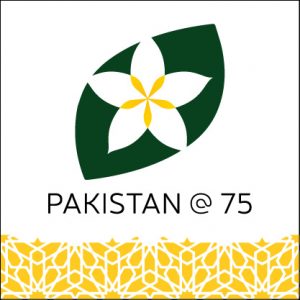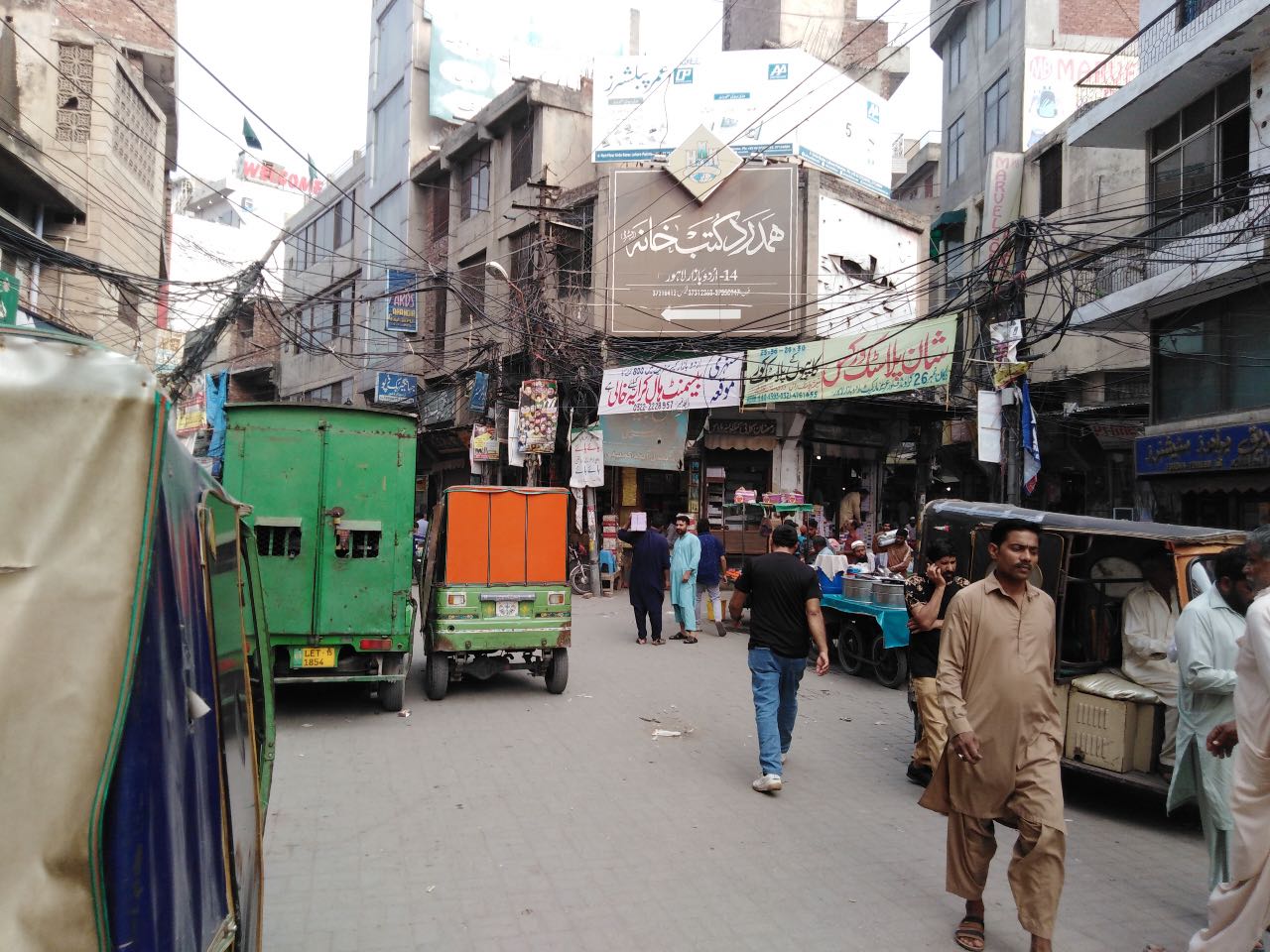 Pakistan, in the words of its founding father Muhammad Ali Jinnah, would herald a modern, pluralist, Islamic nation-state. In this overarching post, Tahir Kamran argues that Jinnah’s untimely death in 1948, soon after the birth of Pakistan, led to the country passing into the hands of interest groups whose ultimate actions have defeated the original ‘idea’ of Pakistan.
Pakistan, in the words of its founding father Muhammad Ali Jinnah, would herald a modern, pluralist, Islamic nation-state. In this overarching post, Tahir Kamran argues that Jinnah’s untimely death in 1948, soon after the birth of Pakistan, led to the country passing into the hands of interest groups whose ultimate actions have defeated the original ‘idea’ of Pakistan.
Pakistan was realised as a polity on 14/15 August 1947 as a nation-state, underpinned by an ideology embedded in pan-Islamism. The latter part of this assertion is redolent with contradiction; in fact, every concept or its subsequent realisation in Pakistan is characterised by contradictions.
Khalid bin Sayeed, in the opening sentence of his Politics in Pakistan: The Nature and Direction of Change, describes the creation of Pakistan as an ‘aberration from the norm’. But that was Pakistan’s uniqueness. Generally, nation-states exist in contradistinction to unilateralism drawn from universal ideologies like pan-Islamism. The Muslim leadership striving for Pakistan validated its claim for a separate state by foregrounding the category of ‘Muslim’ as universal. Thus, the conceptualisation of a nation-state such as ‘Pakistan’ drawing its raison d’etre from religion with universal appeal turned it into a contradiction in terms.
Pakistan has two forefathers: (Allama) Muhammad Iqbal (1877–1938) and Quaid-i Azam Muhammad Ali Jinnah (1876–1948), the former ideological, the latter political. Iqbal propounded an ideology extracted from Islam, and Jinnah helped to transpire it into a nation-state. Apparently, this analysis seems to suggest Pakistan as too quixotic a political idea to be sustainable for long.
But I think quite the otherwise. Such a configuration (constituted of contradictions or, in Hegel’s terms, ‘unity of opposites’) sets in motion a process of dialogue of ideas culminating in a new synthesis. Therefore, the evolution continues. Any socio-political formation like Pakistan containing contradictory currents (cultural, ethnic, sectarian or linguistic) is likely to be equipped with greater potential to evolve into a plural socio-cultural space with a powerful ethos. That socio-cultural synthesis can only be brought about by an effective leadership. That is what Jinnah said in his address to the Constituent Assembly in Karachi on 11 August 1947:
[I]n course of time all these angularities of the majority and minority communities, the Hindu community, and the Muslim community, because even as regards Muslims you have Pathans, Punjabis, Shias, Sunnis and so on, and among the Hindus you have Brahmins, Vaishnavas, Khatris, also Bengalis, Madrasis and so on, will vanish .… You are free; you are free to go to your temples, you are free to go to your mosques or to any other place or worship in this State of Pakistan. You may belong to any religion or caste or creed, that has nothing to do with the business of the State.
Jinnah wanted a social plurality to manifest in Pakistan by allowing the disparate sections and groups to forge a nation with a cosmopolitan outlook. However, his demise derailed the whole process that could have built Pakistan on inclusive and plural foundations. The reins of power fell into the military–bureaucratic oligarchy, with a palpable tilt towards the United States. The process of Constitution-making slowed down, and the erosion of democratic institutions stymied the state’s bid to acquire a representative character. Consequently, with a coterie of non-representative and self-serving individuals in control of a diverse country like Pakistan, any effective arbitration between disparate cultural, religious or sectarian groups became a virtually impossible proposition. Socio-political synthesis came to a halt, instead unleashing forces of exclusion. Despite catastrophic ramifications, the military–bureaucratic clique (nowadays referred to as the ‘establishment’) kept wielding overarching power, and the civilian/elected representatives were allowed increasingly limited spaces to function. The absence of any attempt by the state to be inclusive and representative meant that the customary options of mediation and negotiation to address socio-cultural differences were not adopted. Coercive (and exclusionary) mechanisms began to be used without giving any consideration to their consequences. As such, epithets like ghadar (traitor), kafir (infidel) and Fasiq-o Fajir (sinner and impious) began to be used commonly towards detractors or minority groups.
*
From 1949, the passage of Objectives Resolution and the establishment of the Majlis-i Tahaffuz-i Khatam-i Nabuwwat (MTKN; ‘Organisation to Defend the Finality of Prophethood’) initiated the process of exclusion that became a defining feature of Pakistani polity. An anti-Ahmadi movement launched by clerics associated with MTKN in 1953, calling for their exclusion from the fold of Islam. While these demands of MTKN were not acceded to, political instability wrought by this movement resulted in the fall of the government of Khwaja Nazim-ud Din as well as the provincial Punjab government led by Mumtaz Daultana.
That MTKN movement was temporarily suppressed but it re-emerged after almost 20 years. In 1974, the MTKN bounced back with such severity that Zulfiqar Ali Bhutto’s government eventually gave in, and Ahmadis were declared non-Muslims by the elected Parliament (via the Second Amendment) because Bhutto could not resolve the issue through dialogue. Despite his gift of the gab, the clerics triumphed. That opened the door for yet other exclusions, that of Shias, to which I will return below.
Exclusion was not confined to casting out religious minorities only. Cultural and lingual specificities of different groups and factions were called into question too, orchestrated by the military–bureaucratic oligarchs. The Language Movement in the former East Bengal (East Pakistan from 1947) in the early 1950s is a case in point. Political injustice and travesties done in the realms of culture and language paved the way for the separation of East Pakistan (as Bangladesh) in December 1971. Bengalis, despite their majority, were denied their proportion of representation and the principle of parity was introduced. Bengali was given the status of a national language but only after agitations which resulted in loss of life. Centralised control, particularly of General Ayub Khan, proved to be anathema, whose strong-armed tactics and obvious bias against Bengalis became the foremost cause for their demand for separation. His successor, General Yahya Khan, resorted to extreme violence to suppress dissidents in East Pakistan, and that proved disastrous. The eastern part of the country was severed as a result.
*
With democratic institutions denied an opportunity to strike firm roots and attain maturity in Pakistan, political issues were settled through suppression rather than negotiation. Pakistan, despite 75 years of its existence, has failed to evolve to the level whereby it can resolve issues through dialogue, which should be cause for concern.
During General Zia-ul Haq’s eleven years of draconian rule (1977–88) coercion and exclusion were institutionalised as a policy. The Hudood Ordinance was promulgated to limit the freedom of women, and the Zakat and Ushr Ordinance was enforced that drove a wedge between Shias and Sunnis. Shias protested against this arbitrary legislation, which they thought was undue interference in their religious practice. General Zia responded with orchestrating the establishment of ‘Sipah-i Sahaba Pakistan’ (‘Guardians of the Prophet’s Companions’), an anti-Shia militant group; blasphemy laws were used as an instrument of repression against minorities.
The year 1979 was a very important year: the USSR invaded Afghanistan, the revolution gained momentum (and eventual success) in Iran which mobilised Pakistan’s Shia community, and Zia launched his Islamisation process in Pakistan. These developments cumulatively strengthened puritanical tendencies which went on to accord legitimacy to gender and religious exclusion, and exclusion became a standard practice during the Zia years.
Zia-ul Haq died on 17 August 1988, leading the way for the rule of the ‘troika’ (with American oversight). The political theorist Mohammad Waseem (in his recently published Political Conflict in Pakistan) calls this period (1988–99) the ‘establishmentarian’ democracy:
The establishment — shorthand for the military – bureaucracy nexus — is a permanent feature of the way political parties define their goals and means. Thus, Pakistan is an ‘establishmentarian’ democracy. The rise and fall of political parties must be analysed with reference to the establishment, which has been responsible for dominating the political system, manipulating political parties, engineering elections, shaping the media and controlling all other manifestations of a free democratic order, while the illiberal hybrid regime model has become the conventional wisdom about countries such as Pakistan.
During these years, Pakistan had 6 Prime Ministers (with Benazir Bhutto and Nawaz Sharif having two terms) and 4 Chiefs of Armed Forces. The Army Chief became the strongest member of the troika whereas the elected Prime Minister became the weakest and most vulnerable. Therefore, no government could complete its full term. Dissolution of the elected Assembly was a recurrent feature; Zia’s legacy reigned supreme. Horse-trading, corruption and jobbery became common as never before. Both contenders for the slot of the Prime Minister competed in the realm of corruption. Surrey Place and Mayfair flats in London were purchased by them in those days. In October 1999, this musical chair ended when General Pervez Musharraf deposed Nawaz Sharif, who tried to sack the former when he was coming back from an official visit to Sri Lanka. The Army top brass reacted strongly, and Sharif was ousted unceremoniously.
General Pervez Musharraf’s tenure (1999–2008) was punctuated by religious militancy and sectarian antagonism. Events like 9/11 (in the US) and 7/7 (in the UK) did great damage to Pakistan’s reputation on the global stage. Musharraf acquiesced to US pressure in its bid to launch a war on terror against the Talban government in Afghanistan; this hurried agreement by Musharraf (to a threat posed by David Armitage, a US official who called Musharraf) had enduring repercussions on Pakistan. Thus, 9/11 became yet another incident that not only polarized the Pakistani polity but strengthened religious fundamentalism with its perilous socio-political fallout.
Like his preceding military rulers, Musharraf suffered a legitimacy deficit. Therefore, he had to compromise and aligned his interests with politicians of dubious reputation like Chaudhary Shujaat Hussain and Chaudhry Pervaiz Elahi.
The incident at the Red Mosque (2007) proved to be a turning-point that lead to the emergence of militant organisations like Tehrik-i Taliban Pakistan and Lashkar-i Taiba, who unleashed a reign of terror from 2007–2018. Such outfits contributed significantly to further ripping apart Pakistan’s social fabric; the gory upshot of this religious militancy was the assassination of Benazir Bhutto in December 2007. Earlier, the Baloch leader Akbar Bugti was also killed, leading in political instability in Baluchistan as he had a stature of considerable significance. Like dictators before him, Musharraf wore the garb of a messiah and thus attempted political re-engineering, paving the way for corrupt politicians to stage a comeback to Pakistan. Nawaz Sharif and Benazir Bhutto, who had been in exile came back through National Reconciliation Ordinance (NRO), at American behest. After very strong reaction from the lawyers’ community because of Musharraf’s ill-thought-out method to oust Iftikhar Chaudhary, the Chief Justice of the Supreme Court, his fall became inevitable (even the imposition of an Emergency could not rescue him).
Civilian rule returned for almost a quarter century thereafter. President Asif Zardari (2008–2013) with two prime ministers (Nawaz Sharif (2013–17) and Shahid Khaqan Abbasi (2017–18)), and Imran Khan (2018–2022) came and went, mostly because the ‘establishment’ did not want any one of them to complete their tenure. The average tenure of all the governments was 3+ years; in fact, no government has completed its tenure since 1985. The real power emanated from the army, and the Chief of the Army pulled all the strings — from foreign policy, political alliances, and the nuclear program to running banks, utility stores, the National Logistics Cell and Defence Housing Societies. The Army also held its sway on the judiciary; as such, despite violating the Constitution with impunity, none of the Army Chiefs had ever been prosecuted. Osama bin Laden was found by the Americans in a hideout in Abbottabad when General Ashfaq Pervaiz Kayani was the Army Chief but he could not be quizzed because he was the Chief of the Army.
Pakistan under President Zardari experienced the worst possible state of chaos, with incidents like that of Raymond Davis (who killed three people in Lahore), the Salala incident (where several Pakistani troops were killed by Americans), and the Memogate scandal (where Zardari sought American help against his deposition orchestrated by Pakistan’s army). An unending spate of suicide-bombings, drone attacks causing substantial collateral damage, soaring corruption and the dismal state of the economy coupled with bad governance were the legacy of the government of the Pakistan Peoples Party under Asif Ali Zardari.
Things stabilised a bit when Nawaz Sharif returned to power in 2013. His government was working quite smooth with his brother Shehbaz Sharif keeping a firm hold on the Punjab, the biggest and most resourceful province. In 2016, General Raheel Sharif completed his term as Chief of the Army and Nawaz Sharif picked General Qamar Javed Bajwa as the new Army Chief who, as the events unfolded, seemed more interested in politics than the affairs of the army. He proved to be a conspirator, and corrupt, as his family members accumulated billions of rupees primarily from real estate. Apart from Bajwa assuming the impregnable slot, things went awry for Sharif when the Panama Papers scandal hit the house of the Sharifs. It dealt a lethal blow to their politics. Nawaz Sharif lost power and the elections in 2018, a defeat that he and his cronies blamed on General Qamar Javed Bajwa and Inter-Services Intelligence (ISI) Chief General Faiz Hameed. Sharif’s daughter Maryam was particularly vociferous in condemning Faiz Hameed for his alleged role in the ousting of the Sharif family from power. Cricketing icon and known philanthropist Imran Khan was the 22nd Prime Minister of Pakistan, who assumed the reins of power in August 2018 when Pakistan’s economy was in dire straits. A locust attack, the Covid pandemic, indifference of the USA and animosity with Narendra Modi-led India were big challenges for Khan to surmount. Against a hostile media, loud-mouthed opposition, an Army Chief prone to play double games, governing Pakistan was not a bed of roses for Khan. His foreign policy tilt was towards China which ostensibly became the prime reason for the ‘establishment’ and the ISI to stage-manage his ouster from power on 9 April 2022.
Ever since, Khan’s popularity has soared, and he has not only become a pain in the neck for the current government of the Pakistan Democratic Alliance (an alliance of 13 political parties) and the ‘establishment’. Even an attempt on his life (allegedly orchestrated by the ISI’s Internal Wing), and more than 140 legal cases on mostly frivolous grounds have been concocted. Pakistan’s economy is just inches away from disaster. In these circumstances, the immediate future of Pakistan in its 75th year does not hold much promise.
*
The views expressed here are those of the author and do not represent the views of the ‘South Asia @ LSE’ blog, the LSE South Asia Centre or the London School of Economics and Political Science.
This blogpost may not be reposted by anyone without prior written consent of LSE South Asia Centre; please e-mail southasia@lse.ac.uk for permission.
Banner image © Syed Bilal Javaid, ‘Minar-e-Pakistan and Minaret of Badshahi Masjid, Lahore’, 2019, Unsplash.
The ‘Pakistan @ 75’ logo is copyrighted by the LSE South Asia Centre, and may not be used by anyone for any purpose. It shows the national flower of Pakistan, Jasmine (Jasminum officinale), framed in a filigree design adapted from Islamic architecture. The logo has been designed by Oroon Das.
*







